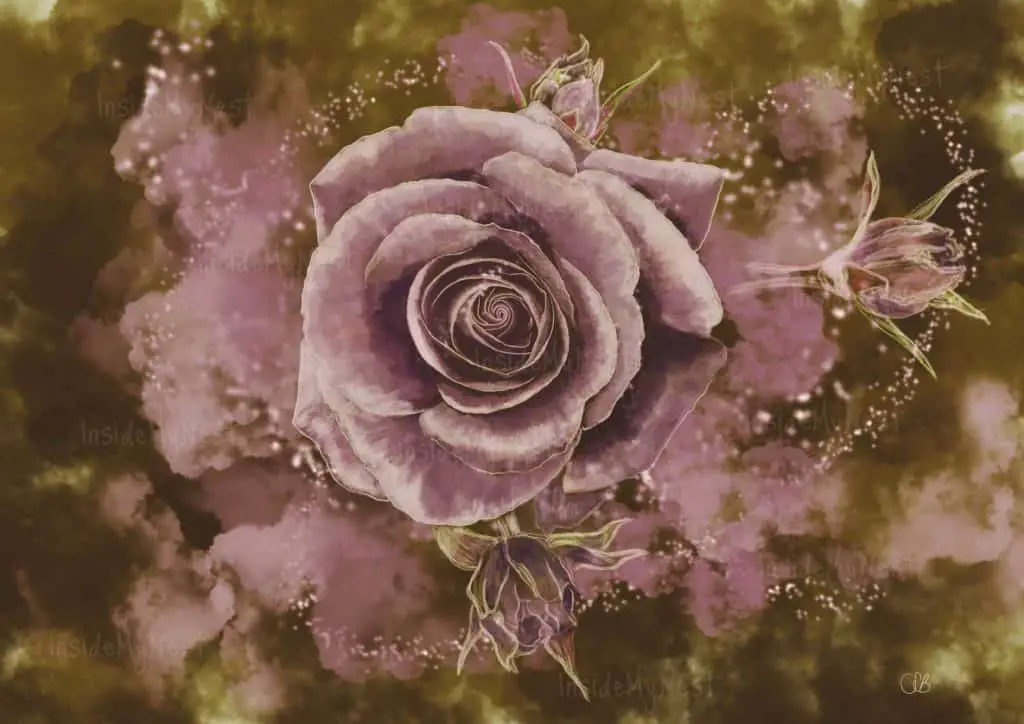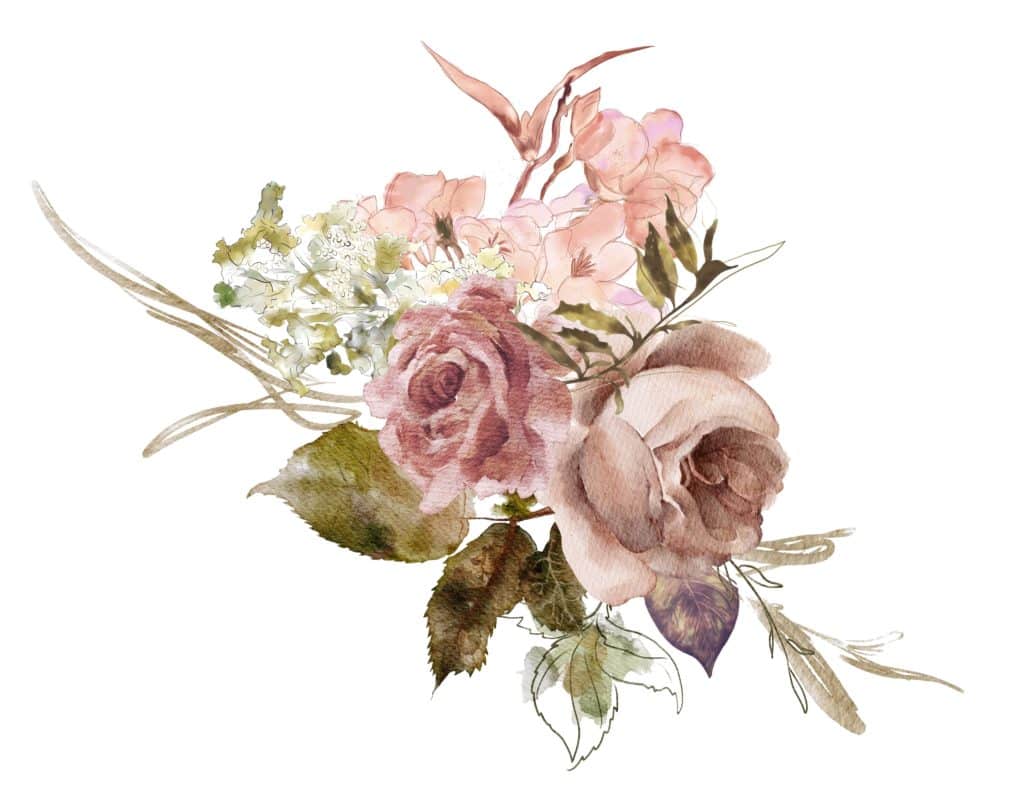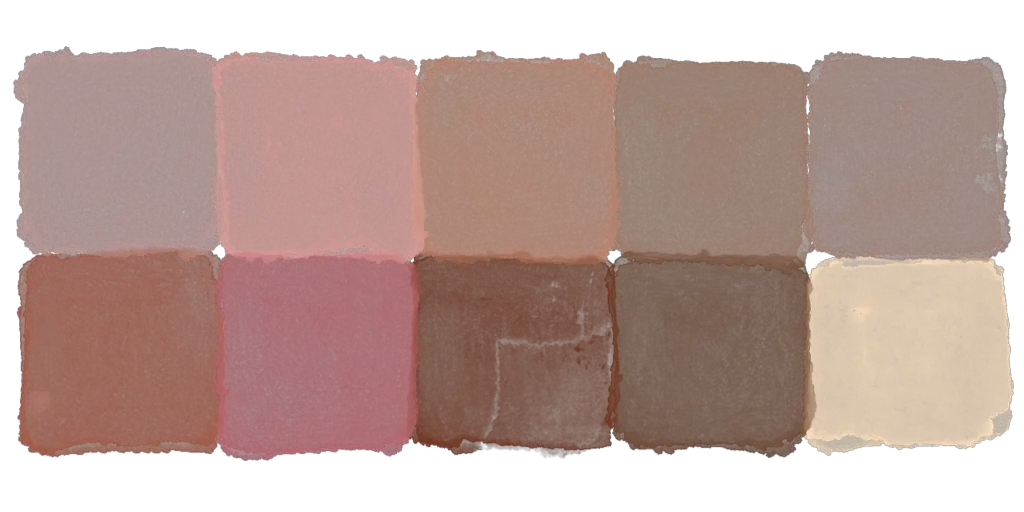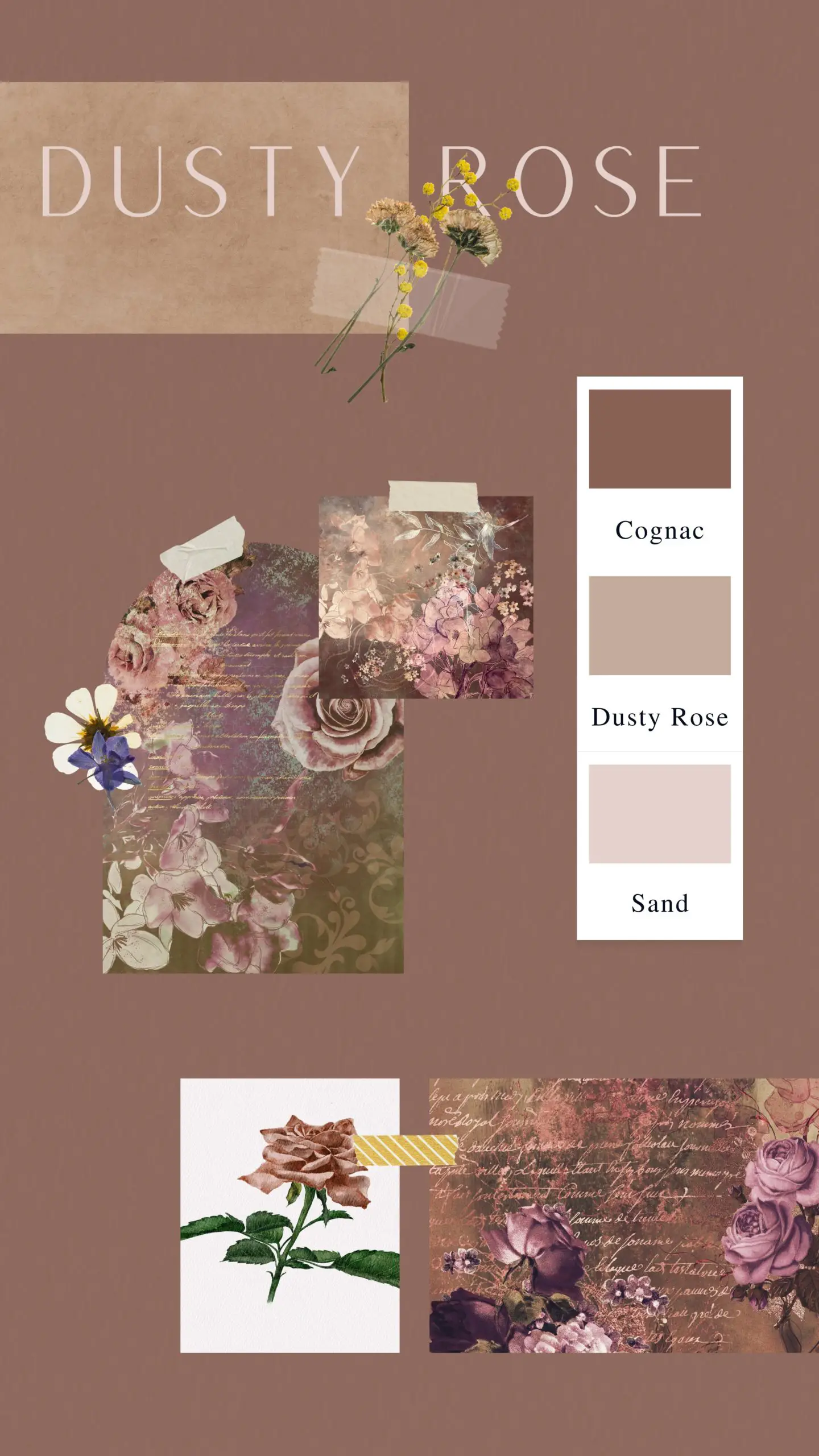Roses come in all sorts of colours and shades, with dusty rose being a particular shade of pink that appears in nature as a mixture of desaturated pinks and purples. While it is named after its frequent cropping up as a colour of rose petal, this is only one of many uses for this particular shade. Dusty rose is a light, pinkish red that is popular to use for natural still life painting, because of the blue undertones used to create it, making it a more natural version of blushing red.

With all of this in mind, how should one go about constructing a colour palette around a colour like dusty rose?
A good place to start with dusty rose is to explore all the ways that dusty rose appears in nature. As a natural shade, dusty rose can be seen in the feathers of all kinds of birds, particularly rosefinches, who have a base coat of greyish brown feathers with a pink head and chest, often darker and more vibrant in the case of the males. This is because pink, when it appears in animals, is often used as a display colour to attract mates or to communicate health to other animals of a like kind. Though sometimes, as is the case with more vibrant pinks, it is simply the case of ingesting pink pigments. Regardless, this pink stands out brightly against the base colours of grey and brown, with are desaturated in themselves, but occupy a cooler space than dusty rose pink. In this way, one use of this shade of pink is as a highlight, pared with more muted colours in order to make the pink more present and vivid.

Similarly, pink is used in flowers to attract bees and pollinators to them. While not as bright as purple or yellow, it is still a powerful colour when it comes to getting the attention of flying insects. However, when used in flowers and other vegetation, it is more often used as a part of the bid for attention, rather than the main even in and of itself. In this way, it is employed in conjunction with light greens, yellows, and even various shades of reds, going from brighter, paler pinks, to as dark and heavily pigmented as indigo.
Serving as a landing pad for pollinators of all sorts, the dustiness of the pink in question comes from blue and grey undertones in the pink, which temper it as compared to louder pinks in nature, and even natural plant “dust” – which can come from pollen, natural particulates, or even actual dust, which can inhibit the plant’s ability to photosynthesise efficiency. This dust covers the leaves of the plant, both normal leaves as well as flower petals, giving it a more natural, somewhat understated look.
Unlike other shades of pink, dusty rose can be so popular for many things. Whereas more saturated pink colours (such as rose quartz or magenta) can create a reflective layer or look painted-on, dusty rose has a dusky colour that’s closer to a shade within the natural spectrum of human skin tones. When using dusty rose in painting flowers, for example, the shade can be darkened or lightened up, while retaining the very particular features that it possesses – like the blue and grey undertones that balance out the warm tones of red and brown.


This means that not only is this colour good for painting flowers, but it also is a perfectly upper layer when using oil paints to depict human faces in particular. Or, for example, the warm colours of palms or inner parts of the human body, where there is a great deal of blood vessels to create a warm, living tone.
When using oil paints, thin layers of pigment are overlaid to create an interplay of light and texture, making it so, when viewed straight-on, you can see all the way through the many layers of to the surface coat of the paint. This is so that a warm colour like dusty rose would be accompanied by various layers of skin-tones, for a balanced reflect the browns, beiges, reds, and blues, that come together to create a human complexion.
With all of these sources of inspiration in mind, it is useful to remember some of the colours that can be used in addition to dusty rose to bring the colour out best, either as a background or as a source of adding nuance when painting details. For this particular shade of pink as well as all variations of red, a tempered, woodsy green is a wonderful addition to balance out the warmer tones.
For dusty rose specifically, however, it can be interesting to combine it with a desaturated green, especially when painting in oils. Or, on the contrary, using a more measured shade of green, like the color of opaque, creamy jadeite, or even as light as Pantone’s milky green, to create a very measured combination of colour. Other colours that can be used in combination include an off-white, like a light cream or one with yellow undertones in it, or shades of grey, both of which bring out the warm, saturated nature of dusty rose to create a more robust palette.
With all of this in mind, I hope that you have an understanding of the many uses of dusty rose, both within how it appears in nature and how it is used in all kinds of art. Looking at dusty rose, and all of the ways that you can incorporate it into your artwork, you should have all of the tools necessary to create a wonderful, well-balanced colour palette that centres dusty rose at its foundation with ease.

